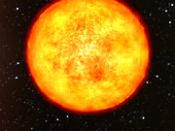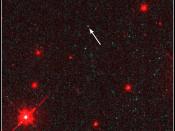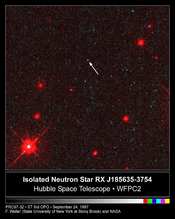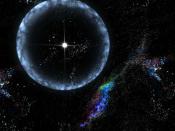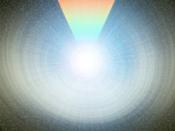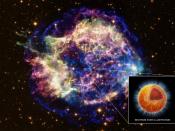The life of a star depends on the stars mass. So the bigger they are the quicker they die. Opposite for smaller ones, the smaller the slower they die. Then the bigger the star the quicker it runs it's energy out.
So in about 4 billion years the sun will exhaust all it's fuel. The Sun's core will collapse on itself, making a very large booming sound and wave of energy. But while the Sun uses it's energy the atmosphere will expand taking all the planets with it.
As the sun collapses it becomes hot enough to ignite helium. The helium then fuses to make carbon. The center collapses and the atmosphere inflates when the helium runs out. As the Sun goes it doesn't have enough mass to re-ignite itself for the third time. It will continue to expand it's atmosphere in a series of dangerous bursts.
The core will eventually form a white dwarf as the Sun dies.
The Sun will then continue to fade gradually. The Sun will fade until it goes out.
When a star is a few times larger than th sun it will die in a much shinier way. The Star will run out of fuel. An shock wave radiates the whole star. This heats the star to one billion degrees Celsius.
This will explode to a supernova. It leaves behind a neutron star and also makes a flash as bright as a whole galaxy.
The most dramatic death would be the star that is about 20 times larger than the Sun. They never stop collapsing. When they become neutron stars they still don't stop. They will keep going and nothing in th whole Universe can stop it at all.
After implosion they bend time and space. Nothing escapes even light, nothing. They are the most mysterious of all the phenomena in the whole cosmos of space and the Universe. The Black Hole!BBC - Science and Nature. "BBC - Science & Nature - Space - Star Death." BBC - Science & Nature. Publish Date N/A. BBC. 11 Dec. 2008 .
